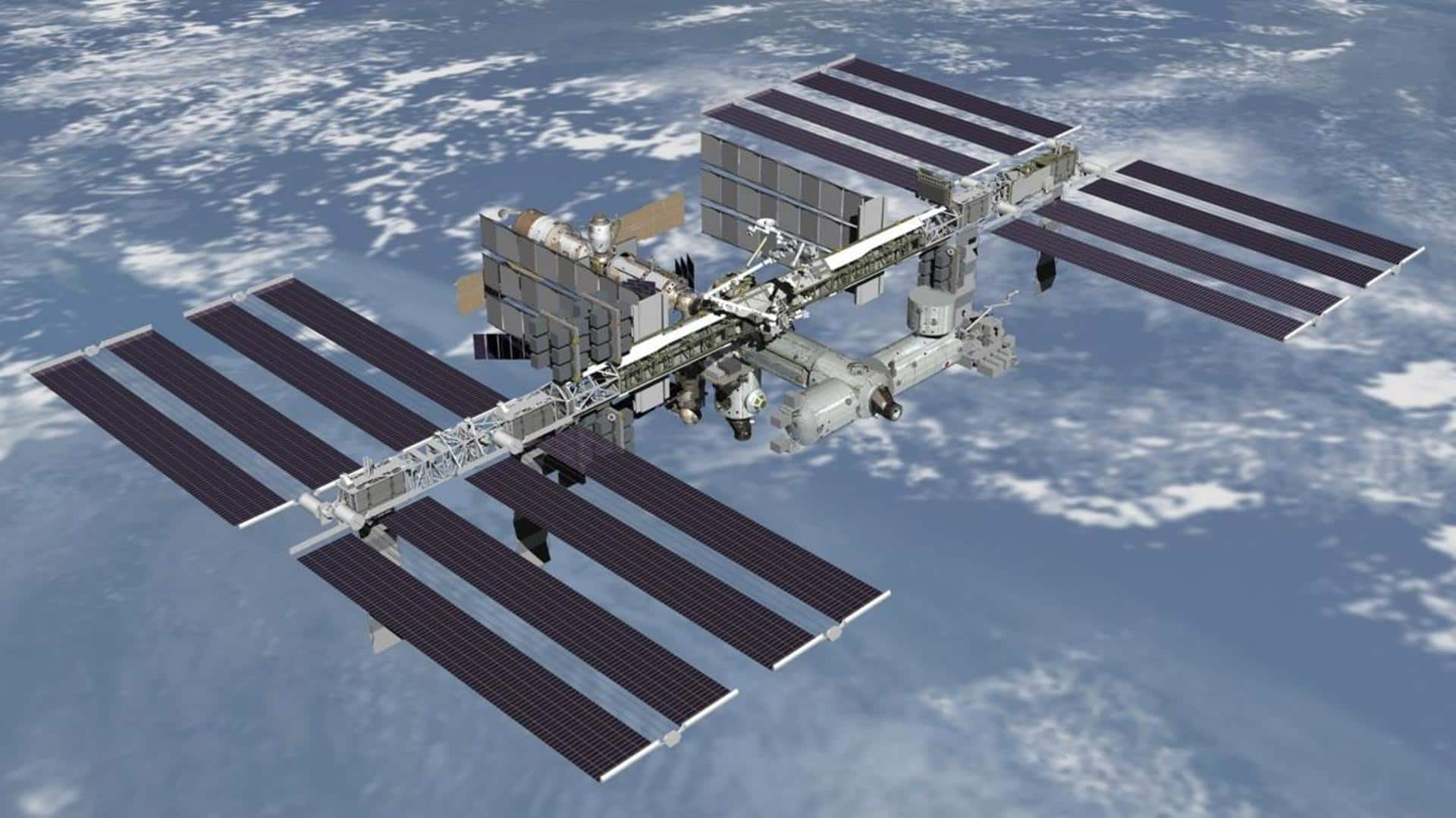
What is NASA's upcoming CRS mission to the ISS
What's the story
NASA will send the 27th SpaceX Commercial Resupply Services (CRS) mission to the International Space Station (ISS) this month. The launch will occur from Kennedy Space Center, Florida. An uncrewed Dragon spacecraft will ship several scientific experiments which include monitoring the changes in the heart in space and testing a student-designed camera mount, among others. Some investigations could have implications on Earth as well.
Context
Why does this story matter?
For over two decades now, there has been a wide range of research carried out at the orbiting space station, from 3D printing to drug development using protein crystals. The previous, 26th CRS mission, included supplies for space agriculture and biotechnology studies such as tomatoes, a diagnostic kit, and other items like solar arrays, and construction components like liquid resin.
Heart-tissue studies
Heart-related investigations involving tissue chips will be carried out
As part of the 'Tissue Chips in Space' initiative, heart-related investigations involving tissue chips—devices that mimic the functions of human organs—will be carried out. The study could shed light on how major heart cell types respond to drugs in space, which in turn could aid in drug development on Earth and can help in the better treatment of patients with conditions like heart failure.
Official words
Tissue Chips initiative has led to "wide variety of research"
"We have been able to develop or modify hardware and expand the types of projects that can be supported on orbit," said Stefanie Countryman, director of BioServe. "The Tissue Chips experiments really opened the gates to a wide variety of research that up until that point wasn't thought possible on station [ISS]. " Countryman added that the project allows "more complex science."
Imaging
The student-designed camera mount could simplify capturing photos/videos inside ISS
Under the High School Students United with NASA to Create Hardware (HUNCH) program, students designed a platform to keep cameras stable while monitoring the ground or capturing photos/videos inside the ISS. The device attaches cameras to the handrails of the space station and could make it easier and faster for the crew to capture content. It can have potential applications on Earth as well.
Carbon-dioxide capturing
CapiSorb Visible System demonstration will be useful for future missions
Microgravity conditions in space make it hard to control the flow of liquids, hence the carbon dioxide removal methods on the ISS cannot utilize specialized liquids used on submarines. The CapiSorb Visible System (CVS) demonstration will replace gravity with capillary forces to control liquids that can absorb carbon dioxide. The obtained data will be useful for future crewed missions to the Moon and Mars.
Information
Liquid sorbents to capture carbon dioxide are a challenge
"Using liquid sorbents to capture carbon dioxide works great on Earth, but in microgravity, it's a challenge," said Grace Belancik, co-investigator of the project. "This system's [CVS] geometry provides liquid control and passive transport in microgravity in the form of a continuous liquid flow loop."
ESA
European Space Agency is carrying out a study on biofilms
The ESA is carrying out a study on biofilms-aggregations of microorganisms that adhere to a surface. The study also involves examining the antimicrobial properties of different metal surfaces in spaceflight. While microbial contamination is unavoidable on crewed space missions since microbes are an integral part of a healthy human body, the investigation could better understand the formation of biofilms under different gravitational conditions.
Information
The study could support the development of antimicrobial materials
It could also support the development of materials that can bring down microbial contamination inside spacecraft. On Earth, such antimicrobial surfaces can have applications in hospitals, public facilities, and for industrial purposes.
Extraterrestrial life
JAXA's-study could reveal if terrestrial life can survive in space
Japan Aerospace Exploration Agency's (JAXA) study called Tanpopo-5 will probe the effect of space exposure on radiation-resistant microbes, moss spores, and biochemical compounds—including amino acids. Amino acids have been found in extraterrestrial bodies like meteorites and the investigation can provide clues if terrestrial life can survive in space. Results could support agricultural activities and planetary quarantine strategies for human activities on Moon and Mars.